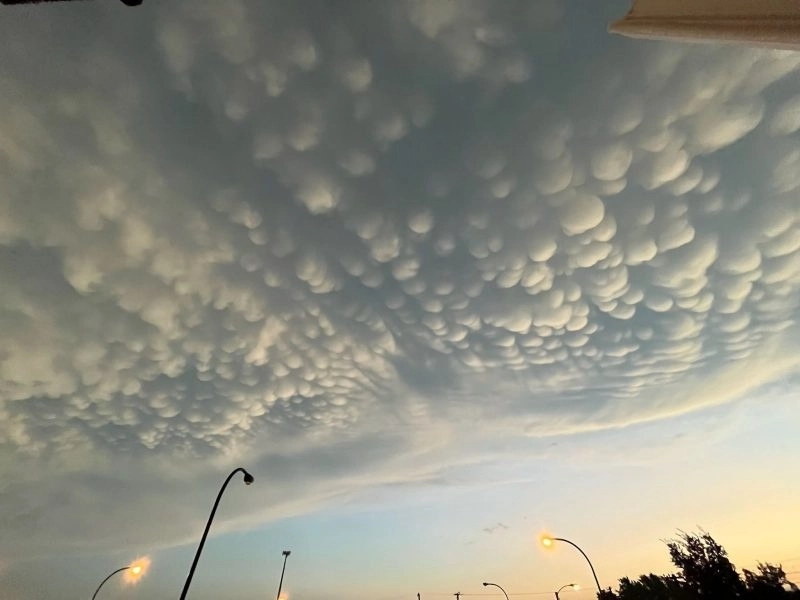From Cumulus to Cirrus: Exploring the Diversity of the Sky
Advertisement
10. Mammatus: The Hanging Pouches

Advertisement
Among the most unique and odd cloud forms in the heavens are mammatus clouds. Mostly known for their similarity to mammary glands, these clouds—which underlie the base of other clouds—most usually cumulonimbus—appear as hanging pouches or udder-like protrusions. Their unusual formations captivate viewers by drawing attention and can provide spectacular, perhaps sinister-looking skyscapes.
Though they are typically connected with the aftermath of thunderstorms, mammatus clouds themselves are not signs of severe weather, contrary to opinion. These clouds develop the characteristic pouch-like forms as cold, dense air pockets sink quickly through the nearby warmer air. Mammatus clouds have a distinctive downward-oriented morphology because of this phenomenon, sometimes referred to as convective subsidence, which is essentially the opposite of the updrafts creating cumulus clouds.
Mammatus clouds' creation is still a topic of scientific inquiry for which numerous hypotheses have been put up to explain. According to one popular view, turbulence in the parent cloud creates pockets of air with varying temperatures and moisture contents that combine. Another idea suggests that they arise from evaporative cooling, in which case localised cooling and sinking of air pockets results from precipitation dropping from the cloud base.
Although mammatus clouds can develop under other kinds of clouds, they are most usually connected with cumulonimbus clouds, especially in the wake of strong thunderstorms. Their presence sometimes produces amazing views, particularly during sunset when they capture the golden light. Many photographers and painters have been inspired by the dream, almost apocalyptic mood created by the interaction of light and shadow on the rounded protrusions.
Though their often sinister look, mammatus clouds usually do not cause strong storms themselves. Their existence, however, can suggest that a major storm system is either nearby or has lately passed across the region. Observing mammatus clouds offers meteorologists and weather buffs important knowledge about atmospheric conditions, including temperature inversions and pockets of turbulence in the lower levels of the atmosphere.
Ultimately, the variety of clouds in our atmosphere provides an amazing window into the intricate operations of our weather systems. From the fair-weather cumulus to the menacing cumulonimbus, every cloud variety reveals atmospheric conditions, air movement, and temperature fluctuations. Understanding and appreciating these celestial creations helps us not only to develop a closer relationship to the natural surroundings but also provides insightful analysis of the always shifting patterns of our temperature and precipitation. While those who have the time to look up and view the always shifting canvas of the sky find unending wonder and beauty, the study of clouds remains a vital component of meteorology giving vital data for weather forecasting and climate research.
You May Like
Advertisement

